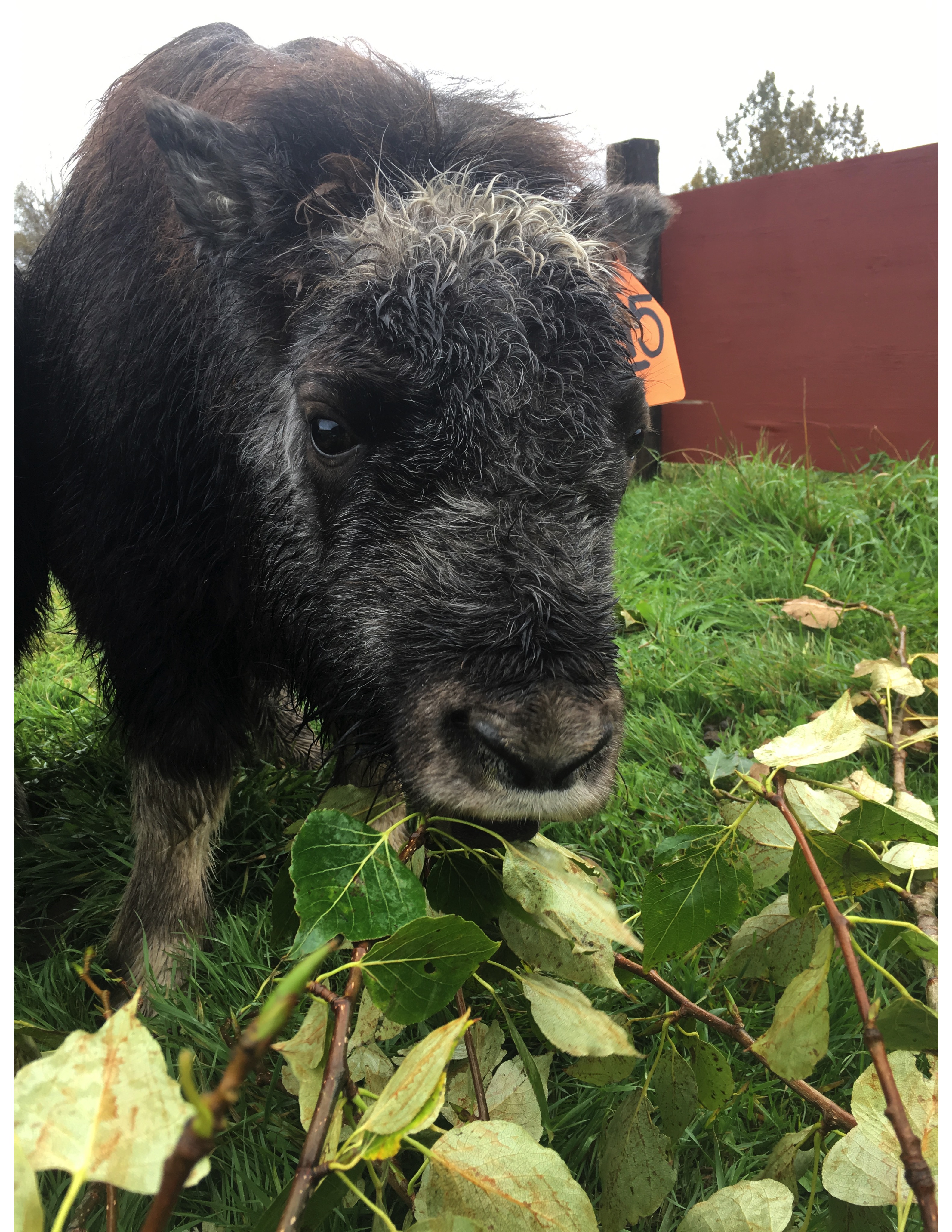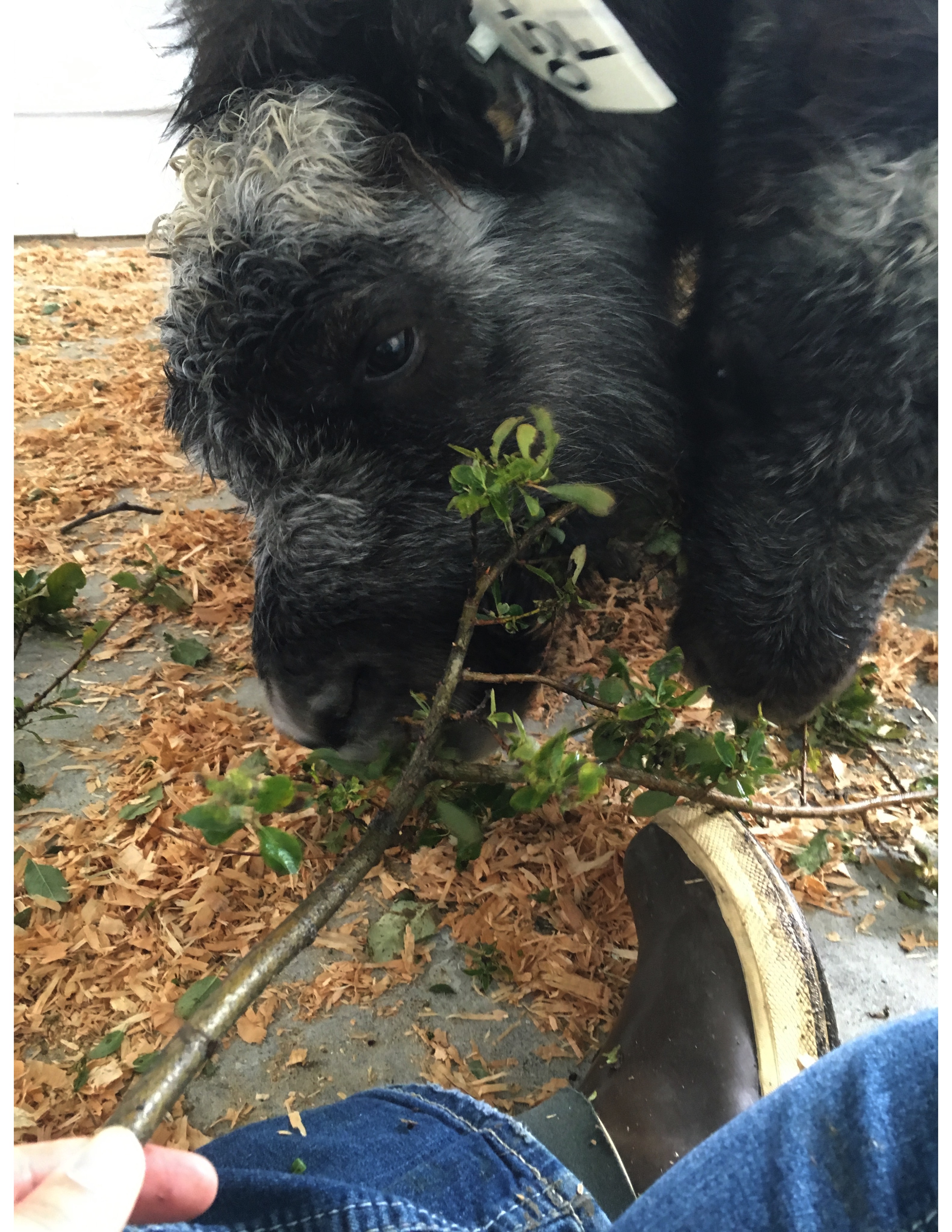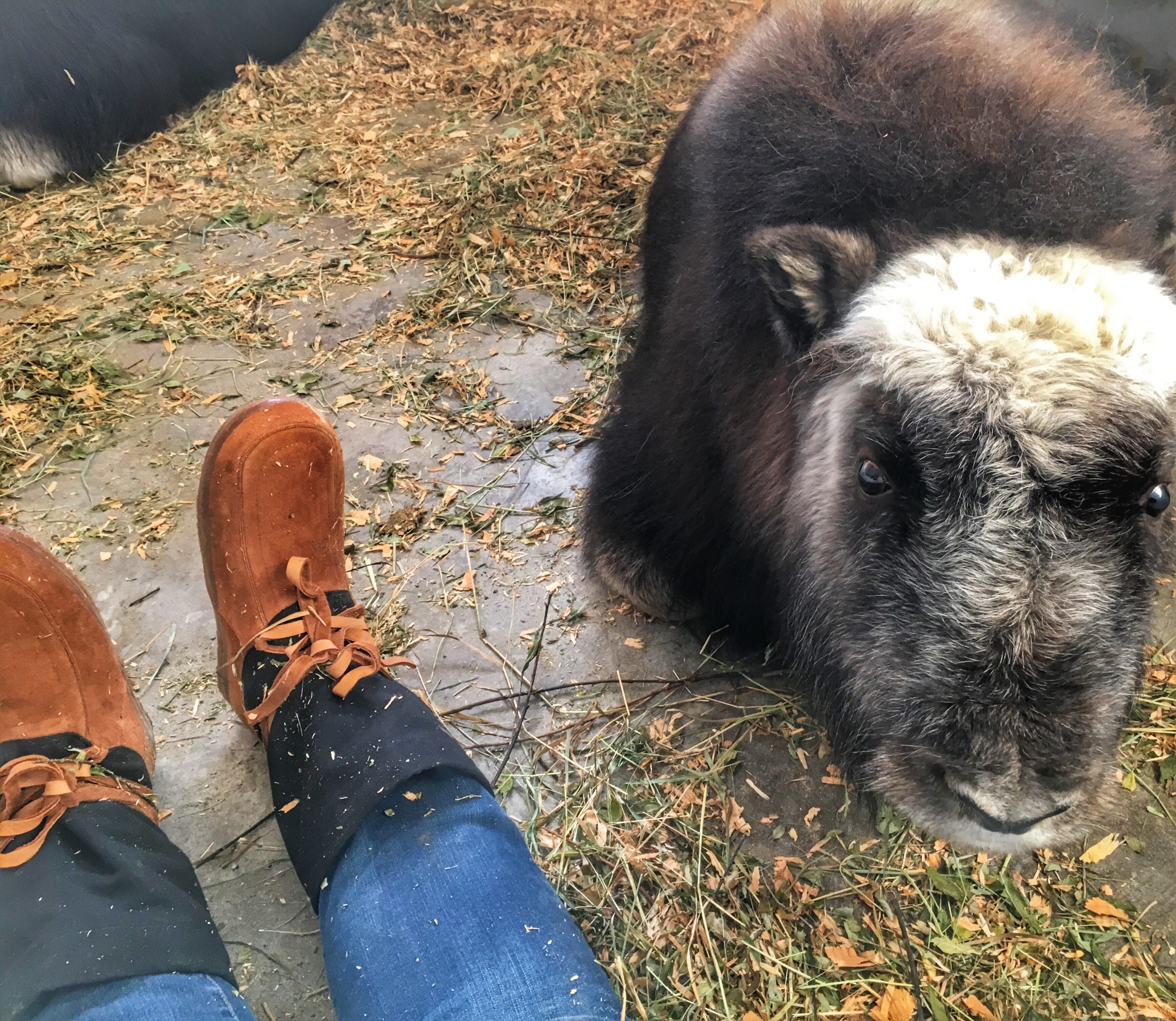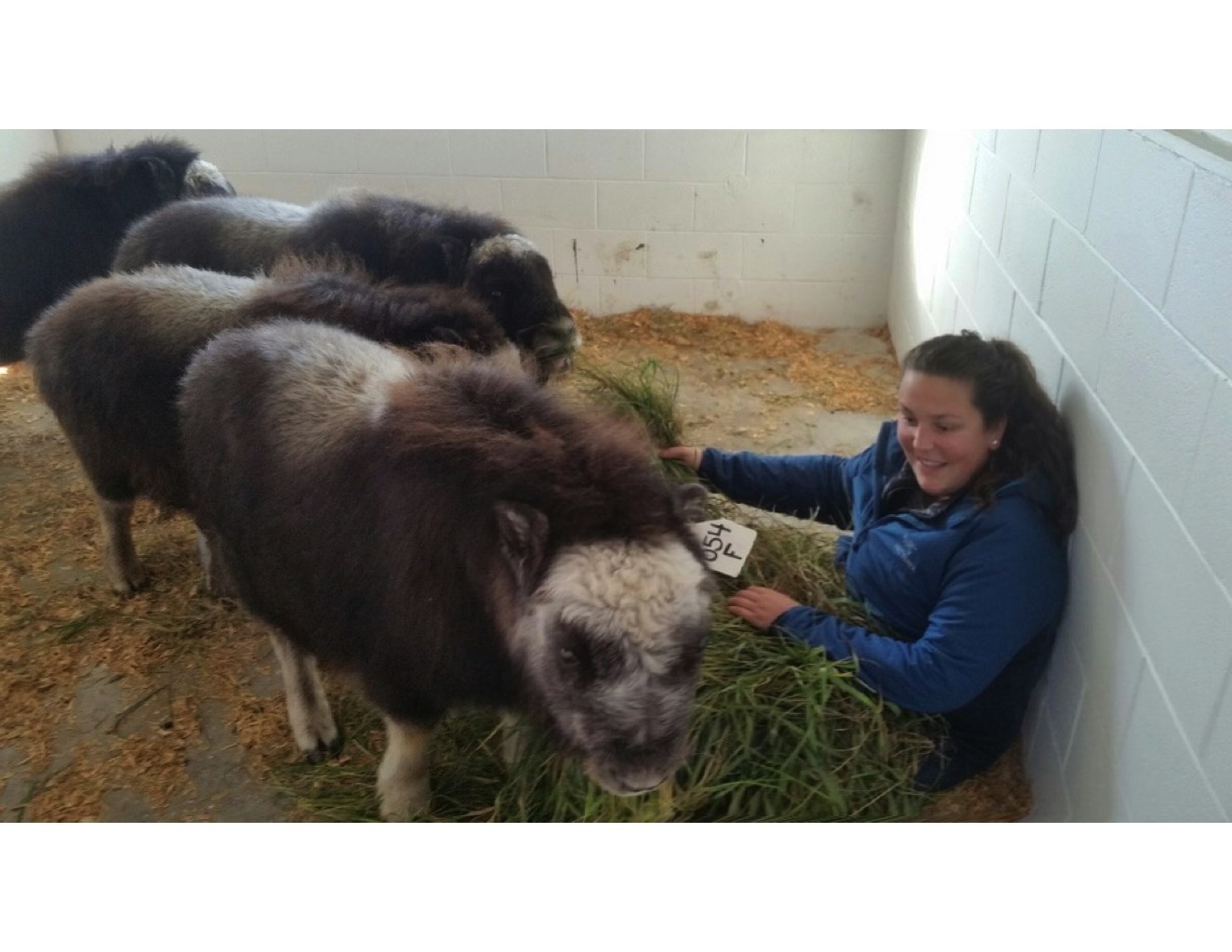by Robin Lockwood
“Mom!” I cried “Can we please just stop on the way home?!”
This was a common Monday evening routine during the car ride home from my harp lessons.
“I just really need to say hello!”
Over 80% of the time, my prayers would be answered and the detour was taken. You see, no one in my family could resist saying hello. If we ever happened to be on the same side of Fairbanks as the Large Animal Research Station (home to a herd of musk ox) and had some extra time on our hands, we would stop to say hi.
Now fast-forward 15 years: I am sitting in Louise Kellogg’s house, my second day of the MSOEE (M.S. in Outdoor and Environmental Education) program at APU’s farm campus in Palmer, when we are introduced to Dani Bierstecker. Dani is the education coordinator at the Musk Ox Farm in Palmer. The farm’s mission is three fold: to domesticate musk ox for qiviut production as gentle and sustainable agricultural practice in the Far North, public education, and providing income opportunities to Alaska Natives.
Now picture this: me, musk ox crazed, sitting in a room of my peers trying to keep calm as she mutters the words “we are always looking for volunteers to come help socialize our baby musk ox”. My eyes started to get watery (you may have experience something similar when seeing a cute dog walk by that isn’t yours). I tried to keep calm but really just wanted to yell out that this has been my dream for as long as I can remember!
As soon as class ended I rushed over to the musk ox farm to sign up! I ran into Dani and took the time to explain my background in environmental education. She calmly said that she was hoping to find an education intern from my MSOEE cohort since it would count as a practicum credit. Once again, trying not to scream in delight, I accepted the education position.
Just so we are all on the same page here is a little recap: me, the musk-ox-crazed grad student, just got a job working with kids (both the human and the little fuzzier kind!)
I now spend about 10 hours a week working with Dani putting together curriculum material for the farm. This allows us to have students out at the farm, loan out curriculum kits, as well as deliver lessons in schools ourselves. As much as I enjoy my time as an environmental educator nothing could compare to those few hours a week that I have four 200-pound qiviut filled kids nuzzled up against me.
In Paul Twardock’s class, Outdoor and Environmental Education Literacy, we recently read a book title Free Choice Learning and the Environment. A concept woven throughout was this idea of an ‘ah-ha’ moment, one that sparks passion in the learner. I had this moment when staring at these prehistoric animals in Fairbanks and it has clearly shaped the rest of my life. As an environmental educator I am able to provide people with the knowledge base so they to can experience their own ‘ah-ha’ moment.




